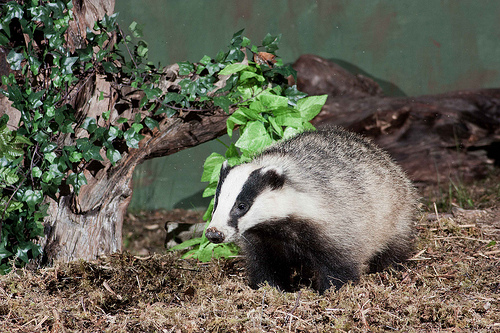
October 16, 2012, by adam
Bovine TB: Some Science, More Politics, Very Public
Unless you have been diligently avoiding any news media you will be aware that a pilot cull of badgers is about to start in Gloucestershire and Somerset. The cull, long desired by groups such as the National Farmers’ Union (NFU) and the British Veterinary Association (BVA) is needed, proponents argue, in order to tackle the spread of Bovine tuberculosis (bTB) in cattle.
The government’s decision reverses the position taken by the last Labour Government which ruled out a cull in July 2008. While Labour in government in Westminster followed a no-cull policy, Labour in Wales was prepared to support a cull when it was in coalition with Plaid Cymru, but promptly abandoned the policy after the 2011 Assembly elections where it won half the seats and could govern alone. What is curious about all of these policy decisions is that they claim to be ‘science-led.’ What is more, they have all been taken on, essentially, the same scientific evidence base.
The central piece of evidence is the 2007 report of the Independent Scientific Group on Cattle TB (ISG). The ISG carried out a ten year experiment to establish if badger culling could play a role in controlling the disease in cattle. The clear and unambiguous conclusion of its report was that ‘badger culling can make no meaningful contribution to cattle TB control in Britain.’
Despite this, the NFU and BVA continued to argue that a cull was necessary. While not ruling out other measures, many argued that to tackle the disease required ‘all the tools in the toolbox.’ The present coalition government, in their coalition agreement, stated that they would pursue a ‘science-led policy of badger control’ in high incidence bTB areas.
We should, perhaps, pause and ask can science really tell us if we should or should not cull badgers to control bTB? Science can certainly contribute a great deal to consider. Science identified the causative organism, led to tests for the disease in cattle, helped us understand the ecology of badgers, and so much more. But can science tell us if we ought to cull badgers? The evidence on the effectiveness of culling is open to different interpretations and science is used by both sides in the debate to support its position. Nevertheless, the balance of scientific opinion is opposed to a cull and former members of the ISG were among signatories to a recent letter in The Observer criticising the pilot cull.
But science can also be used to support a cull. The coalition agreement refers, after all, to a science-led policy not a policy decided by science. The decision to cull was a political one; the role of science here is to make it as effective as possible.
Once the decision to cull or not is recognised as a political one, the issue starts to become a little easier to understand. Both coalition parties hold many seats in high incidence bTB areas. In addition, the Conservative Party has long been associated with rural interests. In Wales, Plaid Cymru, too, has support in rural communities. A crude self-interest might be responsible, in part, for these parties’ supporting a cull. Labour, in contrast, is not strong in the big bTB area of the South West. The salience of animal welfare issues may also be higher for some groups of Labour supporters.
Possessing a healthy ego, I propose Spencer’s Law. This states: ‘The position of a politician on badger culling is best predicted not by their understanding of the science but by their party label.’ Of course, bTB is far more complicated than this but the law does serve to bring home that the decision is, at bottom, a political one where science is mobilised to inform and in support of a position rather as a means of determining that position.
If you would like a fuller discussion of bTB policy and of the various scientific reviews, a handy summary up to 2011 can be found here.
Adam Spencer, Research Fellow Schools of Geography and Sociology, University of Nottingham

[…] […]
Lovely post Adam! I know you’ve already seen it but a lot of similarities with a post on abortion from Notts politics: http://nottspolitics.org/2012/10/08/abortion-is-a-party-issue/
[…] problems persist. 2012 saw a prolonged, and still unresolved, debate about the effectiveness and ethics of culling badgers to arrest the spread of bovine tuberculosis in the UK. This followed a series of flashpoints along […]
[…] problems persist. 2012 saw a prolonged, and still unresolved, debate about the effectiveness and ethics of culling badgers to arrest the spread of bovine tuberculosis in the UK. This followed a series of flashpoints along […]
[…] problems persist. 2012 saw a prolonged, and still unresolved, debate about the effectiveness and ethics of culling badgers to arrest the spread of bovine tuberculosis in the UK. This followed a series of flashpoints along […]
More grist perhaps to the evidence for Spencer’s Law? http://hilaryburrage.com/2012/09/19/the-problem-isnt-badgers-its-politically-led-bad-science/